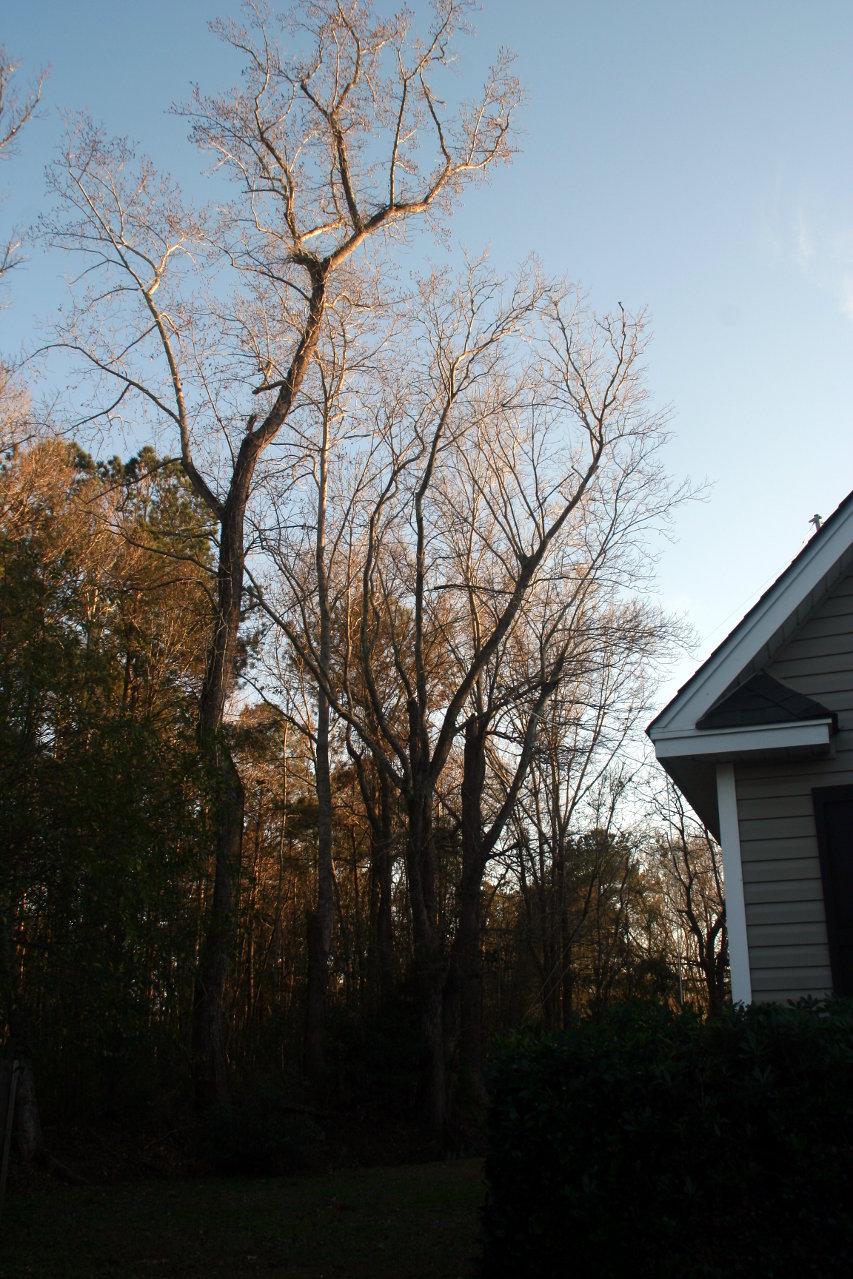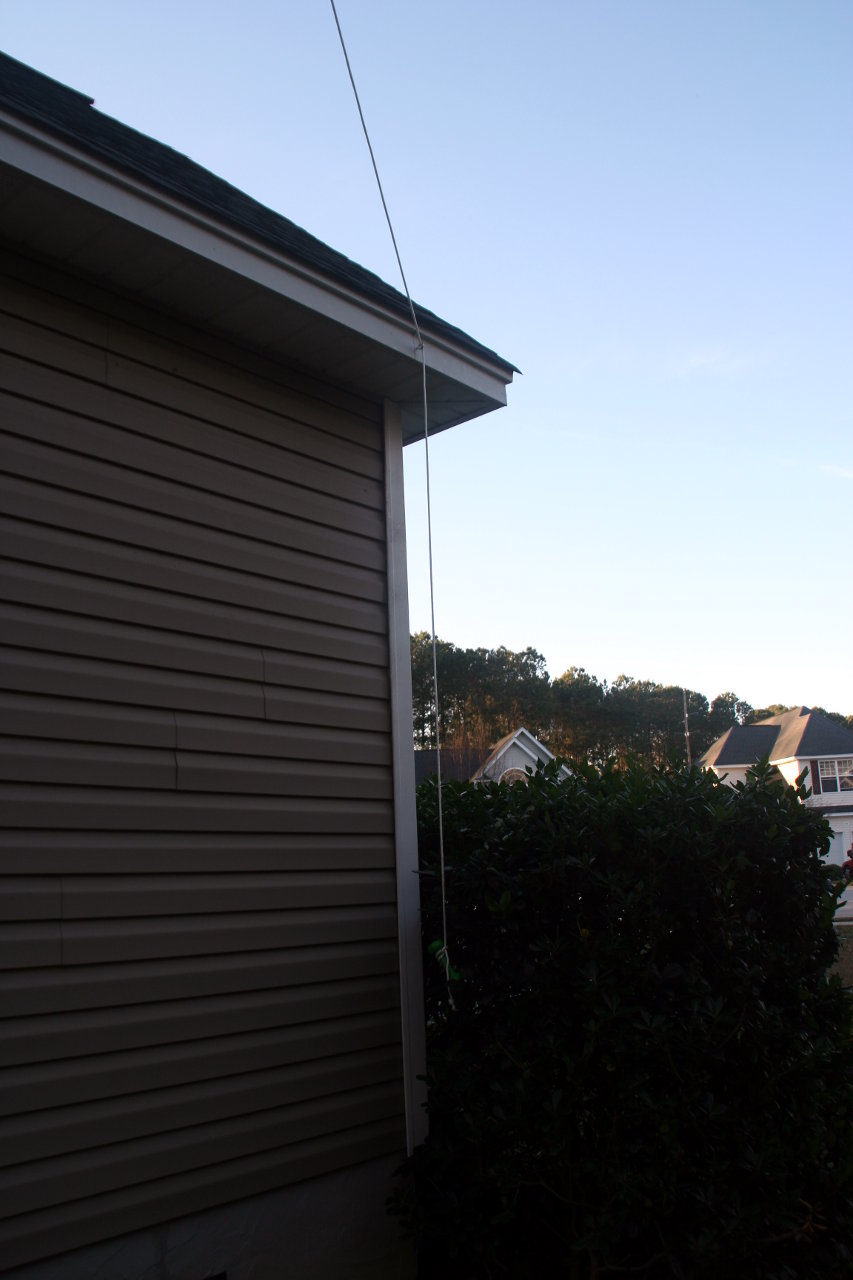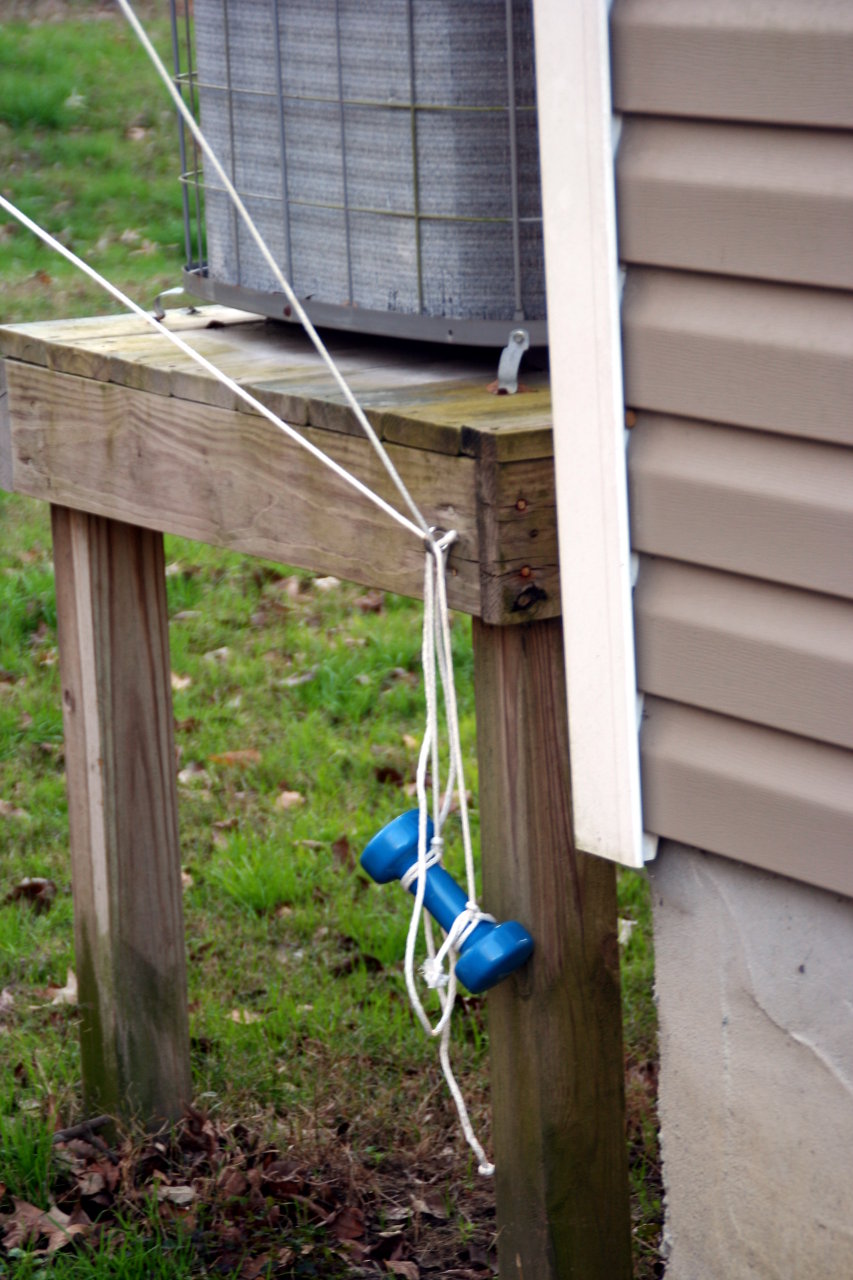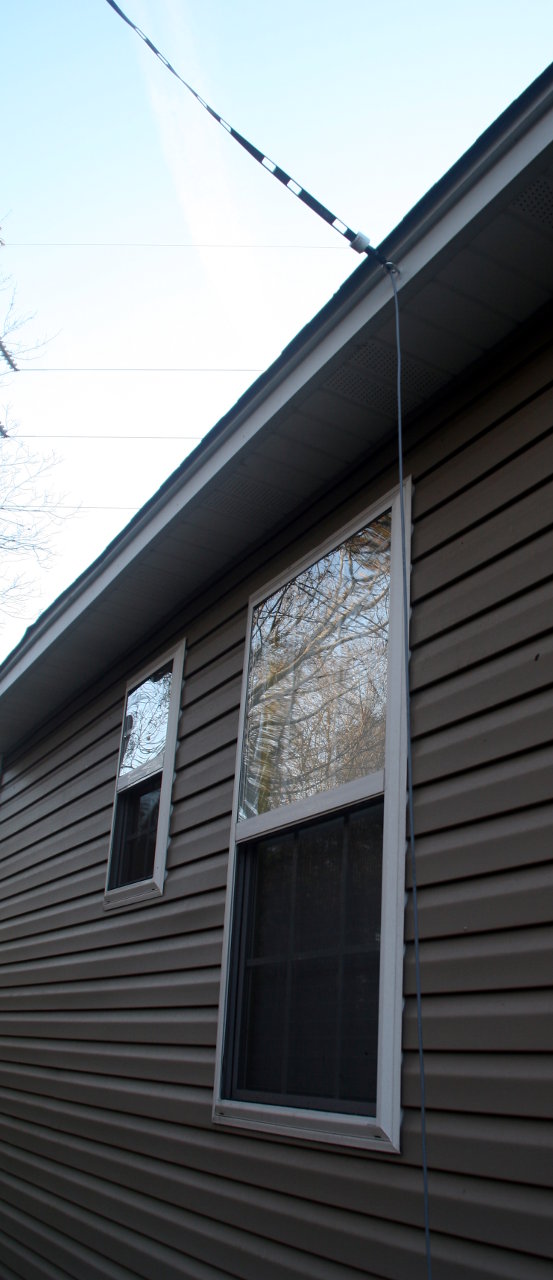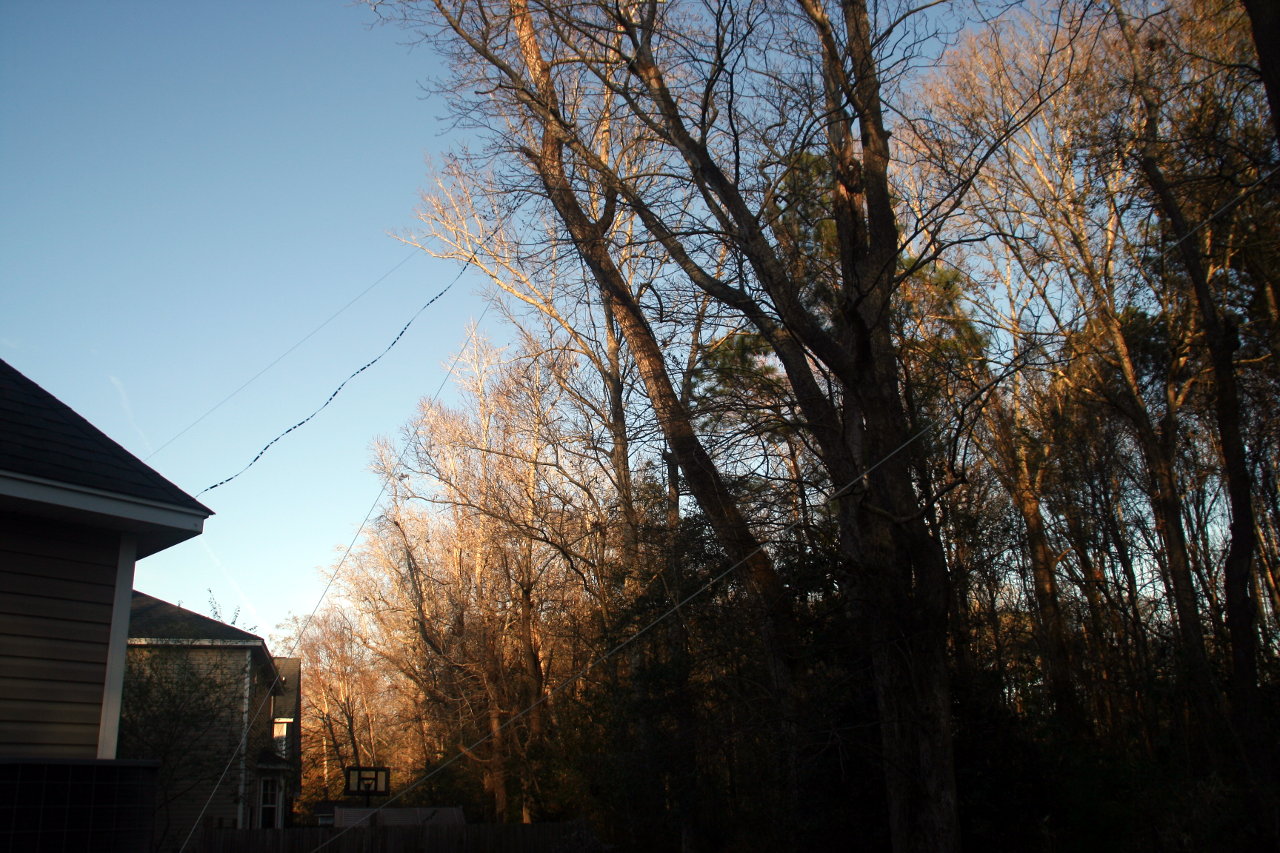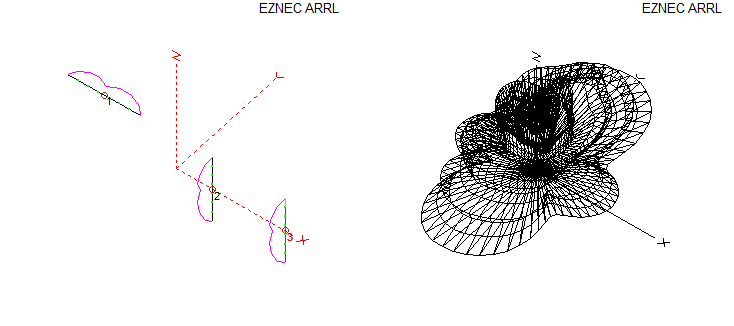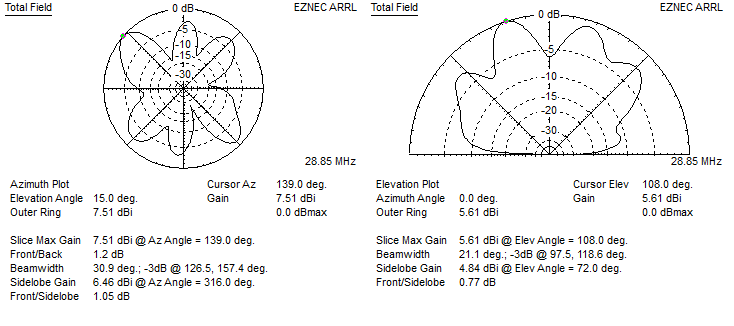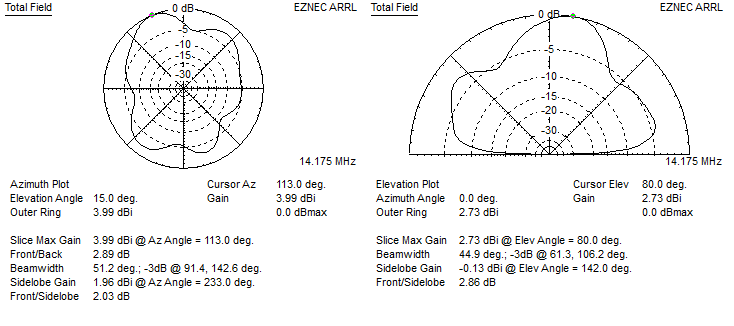Finally got around to playing with the antenna analyzer I picked up at the Atlanta Hamfest. Came with batteries installed and a wall wart so it was ready to go out of the box. First thing I tried out were the inductance and capacitance measurements. Grabbed random wire wound inductor out of the junk box and put it against the antenna connector.
13 μH at 7.06 MHz. A pretty decent amount of inductance. It’s got a lot of windings and came out of a dead laptop power supply I think. Next I put a random capacitor on it. Capacitance meter told me it was around 216 pF. At 7.06 MHz, the analyzer measured 177 pF. Not too far off and something that I might expect at high frequencies.
The analyzer will also measure the amount of coax loss at different frequencies. Put a 75′ length of RG-8X to see what I’d get. At 7.06 MHz, a respectable 0.3 dB loss. At 146 MHz, though, 2.8 dB. Will have to make sure to keep the coax relatively short for whatever VHF/UHF antenna I decide to build.
Time to bring it in and try it out on the antenna. I know the antenna works really well on the 40m band, and the analyzer confirms it. SWR of 1.1 and 50Ω impedance at around 7.2 MHz, pretty much smack dab in the middle of the band. SWR ranges from 2.1 to 1.5 across the band.
Next I want to go through and record some more detailed measurements about the frequency performance of the antenna and maybe graph some things out. I’m sure that will look interesting.
I wonder what the analyzer will tell me about my HT antennas…Analyze ALL THE THINGS!
